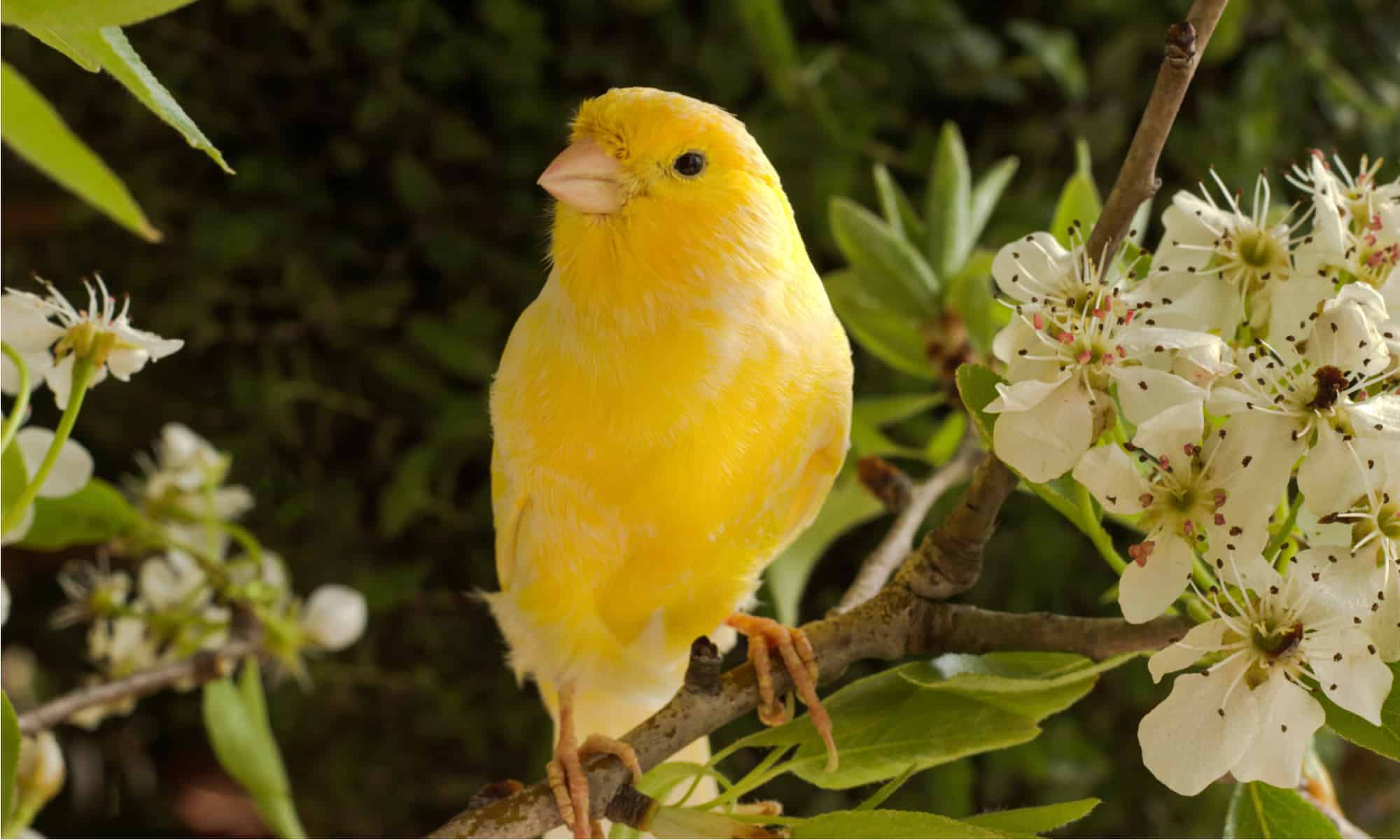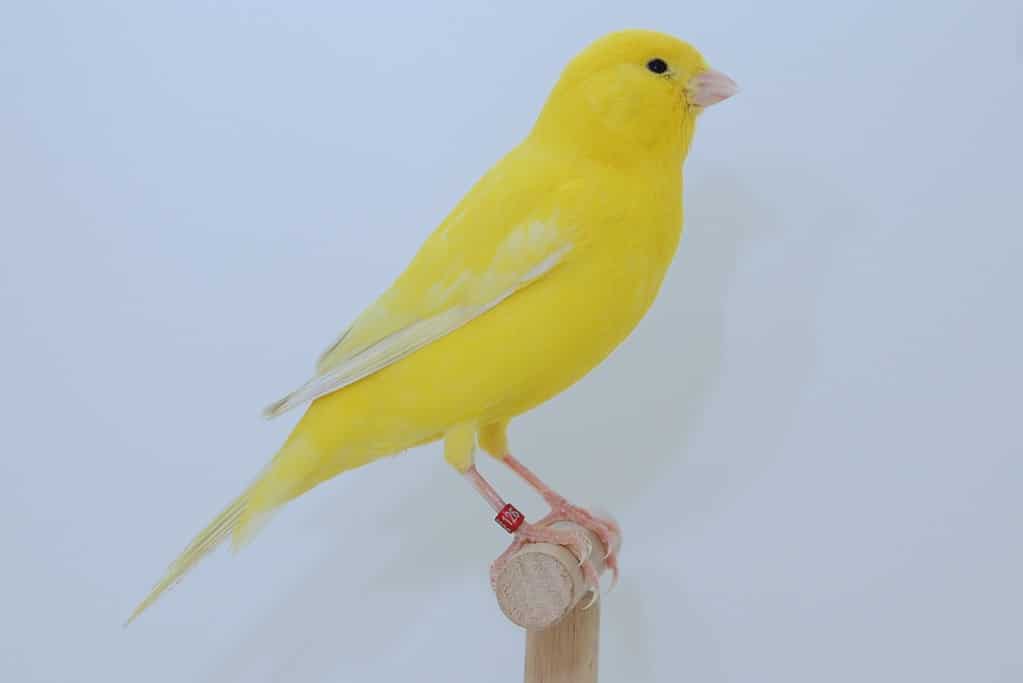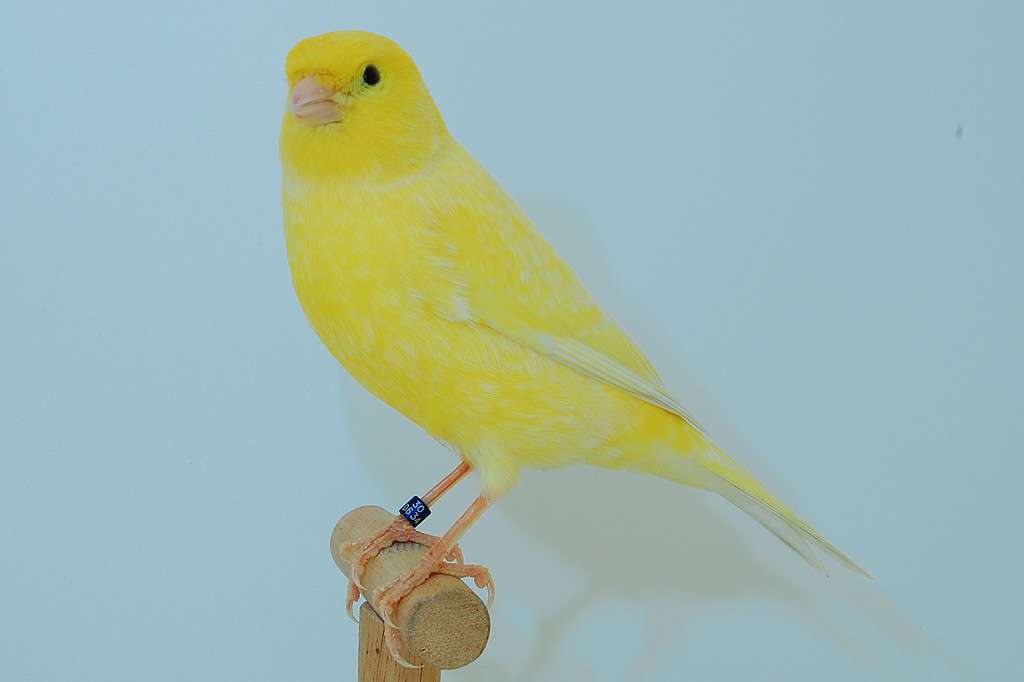The wild Atlantic canary (Serinus canaria) is native to the Macaronesian Islands in the North Atlantic Ocean, including the aptly named Canary Islands. Europeans may have started importing wild stock for aviculture as early as the 1400s. By the 1600s, the domestic canary (Serinus canaria domestica) was a well-established species. Today, it is one of the most popular pet birds in the world.
Domestic canary breeds are generally categorized into three main kinds. These are type canaries, bred for their physical traits; song canaries, bred for their singing voices; and color canaries, bred for, you guessed it, their color!
Color-bred canaries come in a mind-boggling number of varieties, with breeders always working on the next novel mix to add to the ever-growing list. Because canary color genetics involves multiple factors that can readily be mixed and matched into so many different combinations, it is difficult to simply rank these in order of rarity. However, we can make some general observations about which are more or less commonly seen. Read on to find out more about the rainbow of canary colors currently available!

This wild Atlantic canary in the Canary Islands displays the typical greenish-yellow variegated coloration, which is the “wild-type” when seen in domestic varieties.
The Primary Pigment Palette
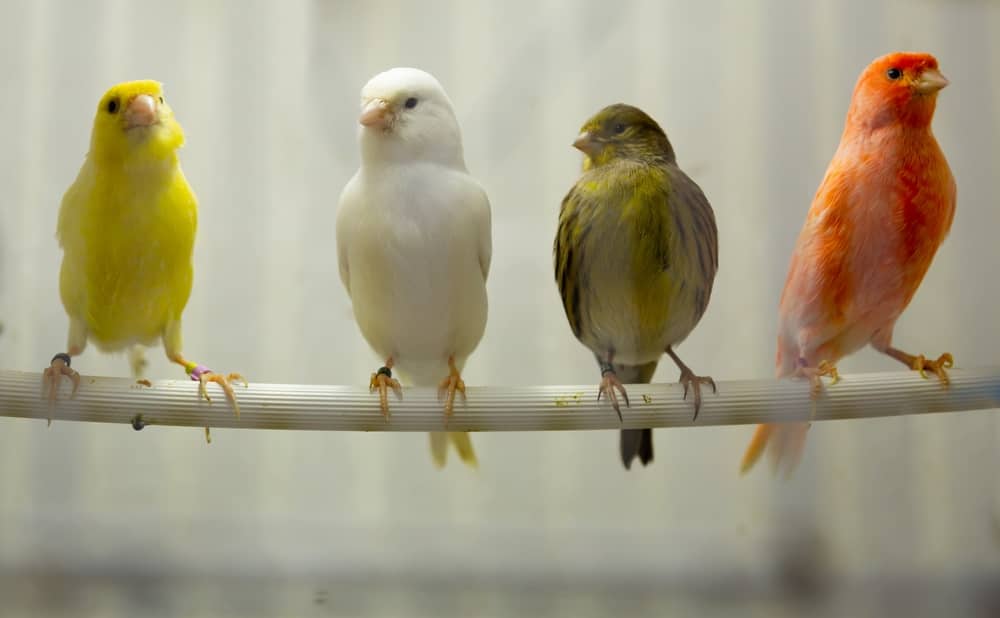
This quartet of canaries shows off the basic pigment-based canary colors of black and brown melanins, yellow and red lipochromes, and white.
©BearFotos/Shutterstock.com
There are two main classes of biological pigments involved in creating canary base colors. These are lipochromes, which make yellows and reds, and melanins, which make browns and blacks.
#1 Lipochrome Yellow

Here is a pair of lovely “lemon yellow” canaries.
©slowmotiongli/Shutterstock.com
As the name suggests, this pigment is responsible for shades of yellow. This, of course, includes the bright all-yellow “Tweety Bird” type! This enduring classic remains amongst the most popular on the market.
#2 Lipochrome Red
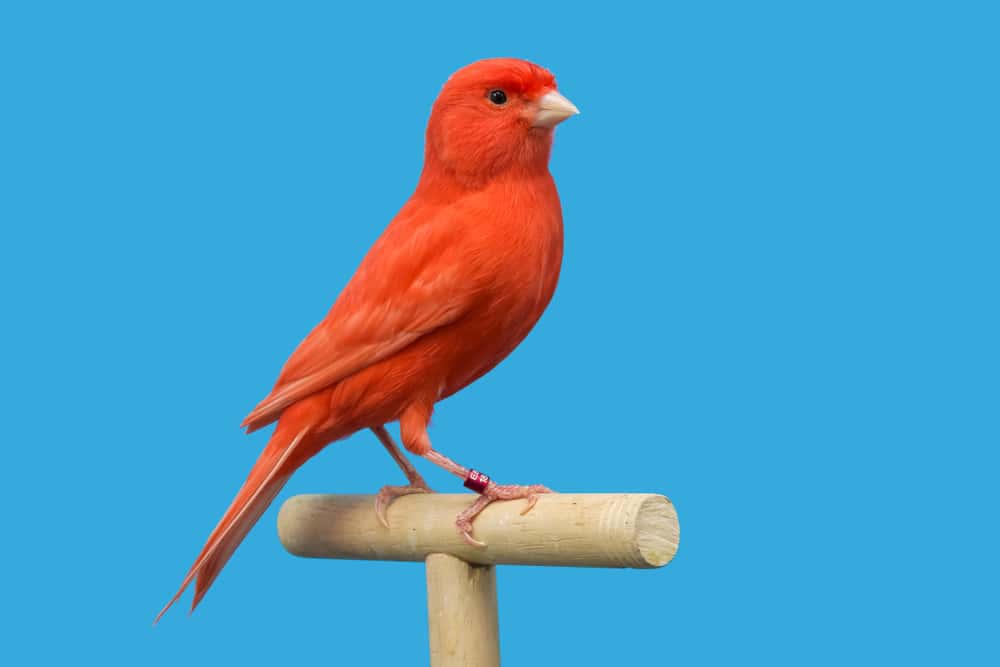
A brilliant “clear red” canary, a color made possible through hybridization.
©Fernando Zamora Vega/Shutterstock.com
Interestingly, this pigment is actually not natural to canaries. Rather, it was first introduced into the gene pool in the 1920s via crossbreeding experiments with another finch species, the red siskin (Spinus cucullatus). However, it has over time become one of the most commonly seen canary colors!
#3 Phaeomelanin

This “phaeo” canary has intensive phaeomelanin coloration.
This is the “brown” melanin type, although this class also produces ruddy reds and sandy yellows, as seen in human hair color. While it can make simple brown feathers, it is more often combined with other pigments to create new shades (see #5).
#4 Eumelanin
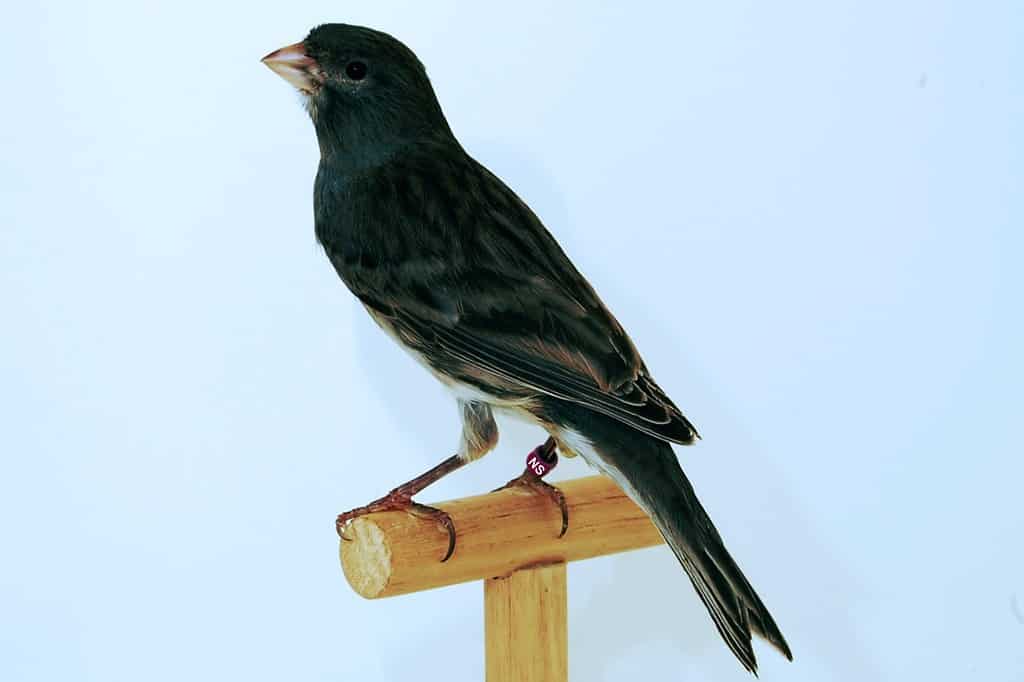
This “onyx” canary exhibits a high degree of black eumelanin — but is still not pure black.
This is the “black” melanin type. This pigment commonly manifests both as black markings on the feathers and as a darkening factor when layered on other colors. However, while a pure black canary should also be possible, this has so far proven elusive to breeders. Rather, the closest thing they can currently produce are very dark varieties dubbed “cobalt” and “onyx.”
#5 Color Combos
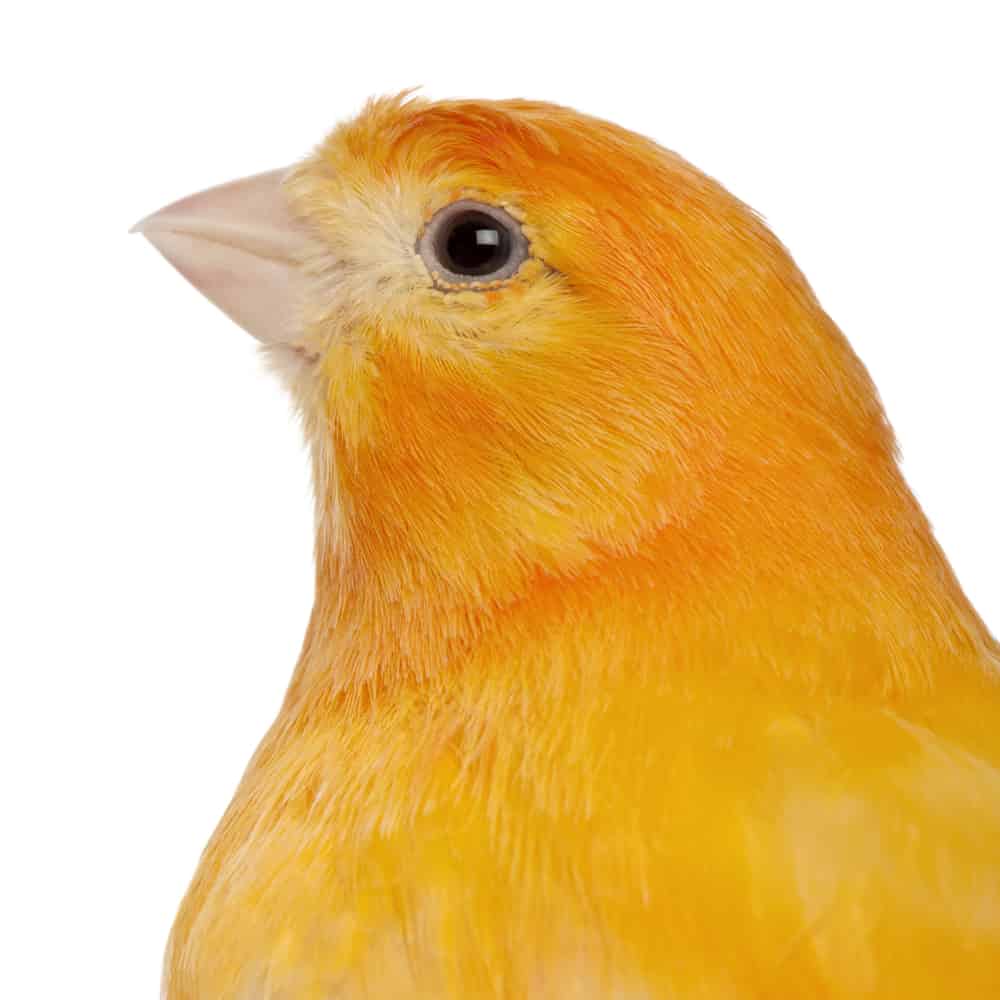
Breeders can create an “orange” canary by combining red and yellow pigments.
©Eric Isselee/Shutterstock.com
Canary breeders cultivate a range of different colors beyond the basic brown, yellow, red, and white through a combination of mixing the above primary palette of colors and tuning their intensity (see “Dilution” below). As breeders create these new designer colors, they give them appropriately descriptive names like bronze, buff, cinnamon, copper, fawn, orange, rose, and many more. Additionally, it is the combination of yellow base color with layers of both melanins that creates the typical greenish tint seen in “wild-type” color.
White Feathers
Canary feathers that lack both melanin and lipochrome pigments will appear white. Breeders also further distinguish between dominant white genes, which produce white feathers that may still show some slight lipochrome tint, and recessive white genes, which produce pure white feathers.
#1 White
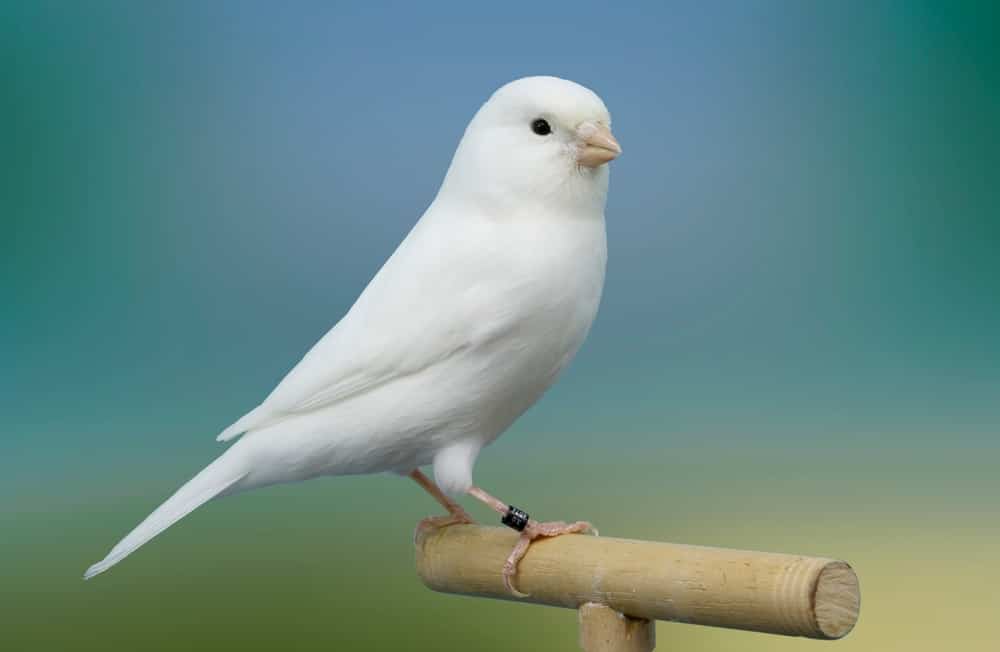
Here is a snowy “recessive white” canary.
©Fernando Zamora Vega/Shutterstock.com
A fully white canary results from an all-over lack of plumage pigmentation.
#2 Pied
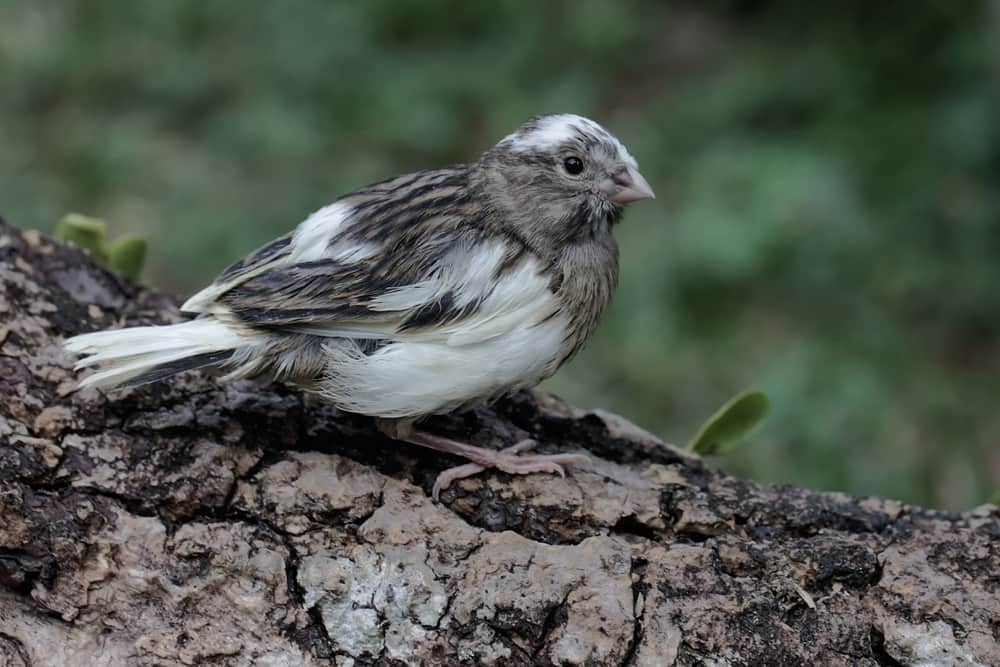
“Pied” canaries can take on a particularly patchy appearance.
©I Wayan Sumatika/Shutterstock.com
Unlike pure white canaries, pied canaries exhibit distinct patches of both pigmented and unpigmented (white) plumage.
Pigment Dilution
Aviculturists also exploit pigment genetics to achieve different forms of dilution.
#1 Melanin Dilutions: Agate, Eumo, Isabelle, Opal, Pastel, Pearl, Satinette, etc.

This canary has a combination of “agate” and “opal” dilution.
As breeders tinker with different levels of dilution of black eumelanin and/or brown phaeomelanin to create different grays and tans, they also coin new terms to describe the results. Unfortunately, the nomenclature isn’t truly standardized, and new terms can pop up anytime.
#2 Lipochrome Dilutions: Ivory
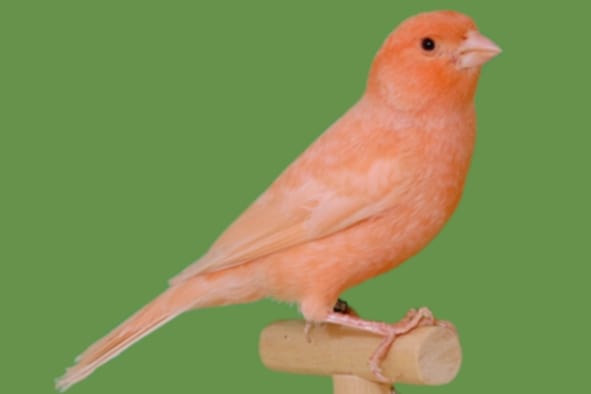
A red ivory (rose) coloration with frosting is striking on canaries.
A single genetic mutation known as ivory dilutes lipochrome yellows and reds. Yellow ivory is sometimes also called cream and red ivory is also known as rose.
Color Distribution/Pattern
In addition to the bird’s base color(s) and dilution factor(s), breeders also cultivate a variety of pigment-based plumage patterns. As with dilution, there is a whole suite of terms used to describe these forms.
#1 The Variegation Scale
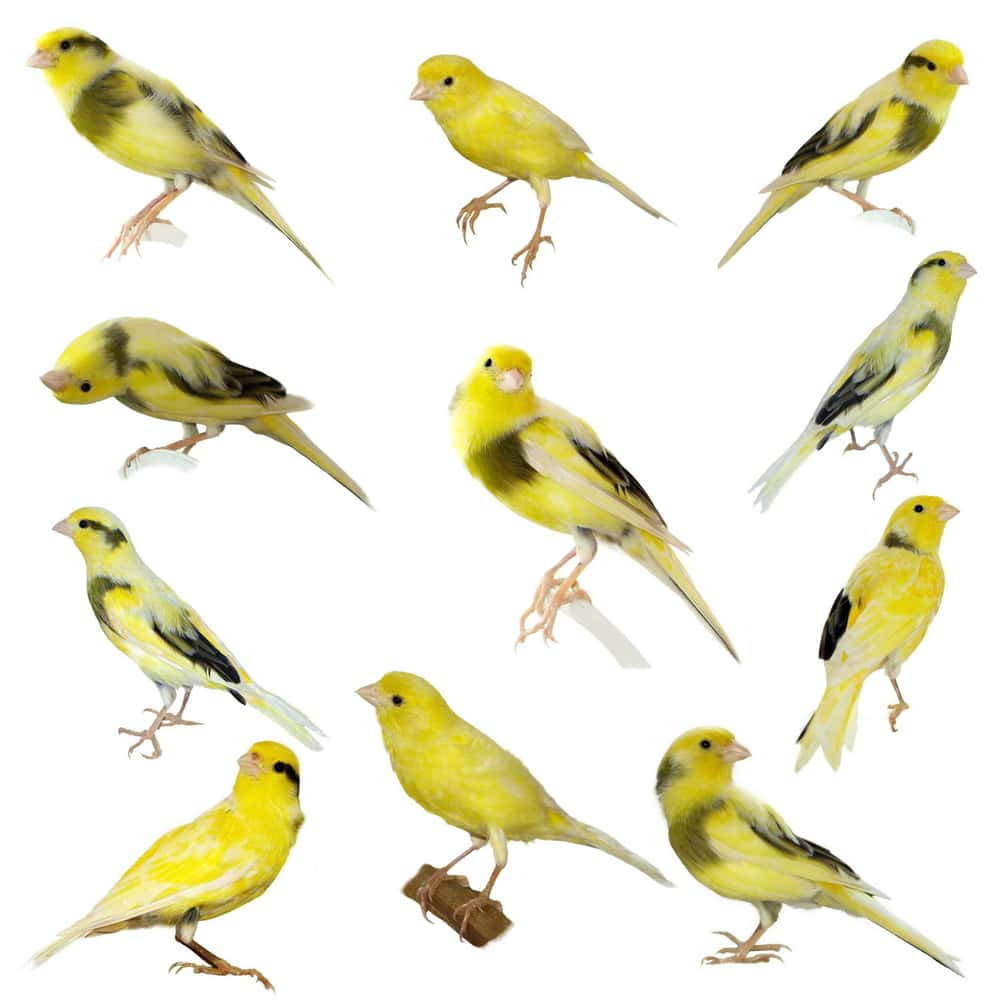
This collage of yellow canaries illustrates different forms of variegation.
©xpixel/Shutterstock.com
- Clear: these canaries lack melanins, producing solid-colored birds of bright yellow, red, orange, or white. These birds are amongst the most popular on the market.
- Self: conversely, these canaries are coated in melanins, producing birds with solid dark shades.
- Ticked: these canaries show just a few dark patches on otherwise colored/white plumage.
- Foul: in contrast, these canaries show just a few colored/white feathers on otherwise dark plumage.
- Variegated: these birds fall somewhere in between the ticked and foul range. They are further divided into light (less than 50% dark feathers), medium (50% to 75%), and dark (more than 75%) categories.
#2 Mosaic
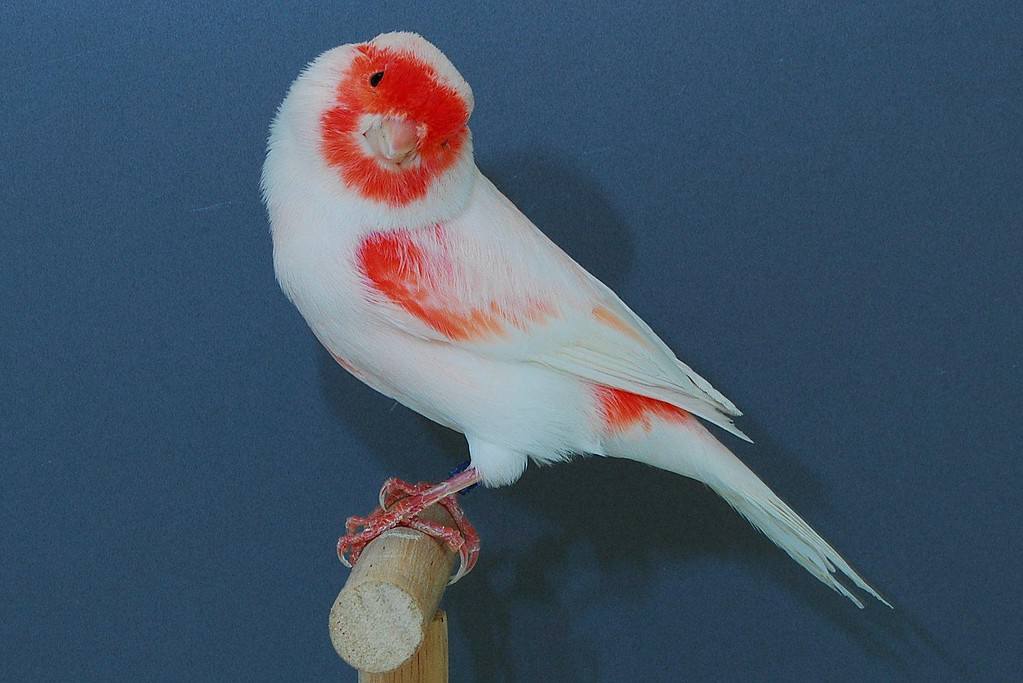
This “red mosaic” canary is bred for its patched red plumage.
While clear red canaries possess a solid red color, mosaic canaries display distinct patches of red. This variety is also unusual because it is sexually dimorphic, with males exhibiting notably brighter colors than females. (While wild canaries are also naturally dimorphic, in domestic canaries, both sexes are usually the same color.)
#3 Lizard

This “lizard yellow” canary exhibits the spangly, scaly reptilian patterning the variety is known for.
While usually technically classified as a type breed rather than a color breed, the lizard’s primary distinguishing factor is in fact a unique form of “spangled” variegation. This striking pattern gives the appearance of lizard scaling, hence the name.
Other Genetic Factors Used in Color Breeding
In addition to pigment type, dilution, and distribution/pattern, canary breeders also exploit a number of other genetic factors to achieve even more color effects.
#1 Frost and Intensive Feathers
Soft frost feathers, as the name implies, give feathers the appearance of having frosted tips, as the barb edges lack any lipochrome pigments. In contrast, rigid intensive feathers are fully colored to the very edge of the barbs. Frost feathers are a recessive trait, while rigid feathers are dominant. Many modern designer varieties of color-bred canaries include frost or intensive factors as part of their recipes.
#2 Ino Factor
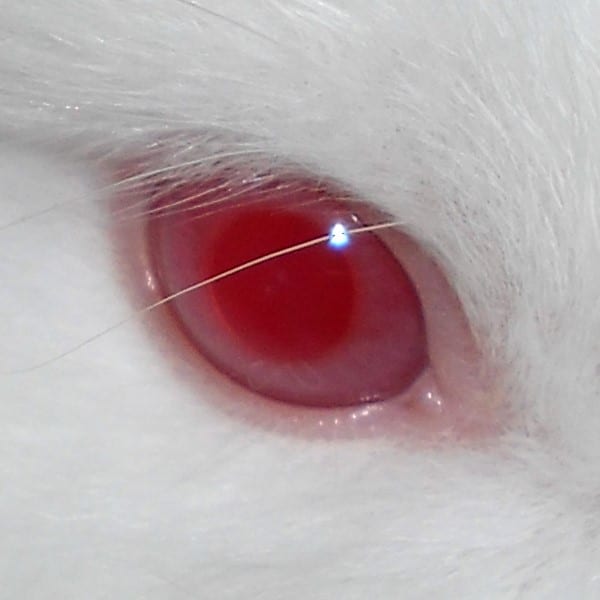
“Ino” eyes completely lack melanin, making them appear shades of red and/or icy blue under different lighting conditions. Pictured is the eye of an albino rabbit.
Unlike other melanin mutations, an “ino” mutation blocks melanin production in not only the feathers, but also the eyes. This, in turn, produces the distinctive red-eyed trait. Breeders further define Ino color varieties as phaeo/inos (only brown pigment present in plumage), lutinos (only yellow), rubinos (only red), and white albinos (no pigmentation present). Ino varieties are relatively uncommon in comparison to their black-eyed counterparts.
#3 Optic Factor
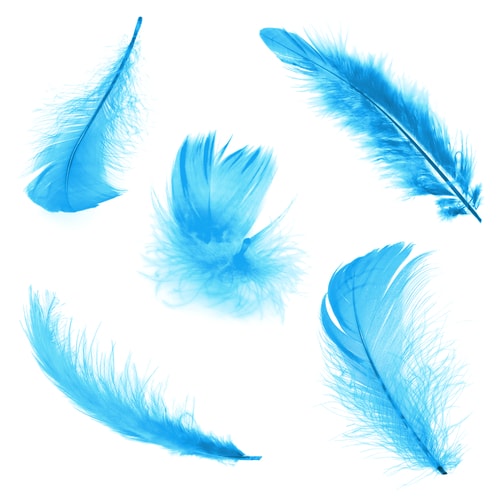
“Blue” feathers have no actual blue pigment in them, but rather appear blue due to an optical illusion known as structural color.
©mexrix/Shutterstock.com
A rare recessive gene mutation is responsible for creating canary feathers capable of producing a structural blue color. Unlike biological pigment color, structural color is purely a trick of optics. Similar to how the sky and ocean can also look blue to us, these feathers refract light in just the right way to appear blue to our eyes. Canaries with a white base color and a strong Blue Factor mutation will appear bright blue to blue-ish gray. Weaker forms appearing more shimmery gray have the Silver Factor. Additionally, canaries with a yellow base color and Blue Factor mutation will appear bright green.
Fun fact: blue feather pigments simply don’t exist in the bird world. In fact, every “blue” bird you see uses this same trick of structural color to fool your eyes! Likewise, only a handful of bird species are known to produce green pigment. This means that most of the time, bright green birds are also using the blue structural color plus yellow pigment color mixing trick described above.
| Rank | Color | Rarity |
|---|---|---|
| 1 | Lipochrome Yellow | Common |
| 2 | Lipochrome Red | Common |
| 3 | Phaeomelanin | Uncommon |
| 4 | Eumelanin | Rare |
| 5 | Color Combos | Rare |
Conclusion
Thanks to centuries of selective breeding by aviculturists, what was once just a wild greenish-yellow canary now also exists as a popular pet canary available in an abundant assortment of colors. Along with type and song canaries, there are now literally hundreds of different canary breeds to choose from. These can range from the simple classic yellow varieties to complicated mixes like “Rose Isabelle Opal Mosaic” — and this variety will only continue to expand as breeders keep experimenting and creating even more cool combinations!
| Color-breeding Factors | Types |
|---|---|
| Base Feather Pigments | Lipochromes (Yellow and Red); Melanins (Brown/Phaeomelanin and Black/Eumelanin); Combos (Bronze, Buff, Cinnamon, Copper, Fawn, Orange, Rose, etc.; Wild-Type/Green) |
| Pigment Absence (White) | White (Dominant, Recessive); Pied |
| Pigment Dilution | Melanin Dilutions (Agate, Eumo, Isabelle, Opal, Pastel, Pearl, Satinette, etc.); Ivory (Yellow Ivory/Cream, Red Ivory/Rose) |
| Color Pattern | Variegation (Clear, Self, Ticked, Foul, Variegated); Mosaic; Lizard |
| Other Color-Impacting Genetic Traits/Mutations | Frost and Intensive; Ino Factor (Phaeoino, Lutino, Rubino, White Albino); Optic Factor (Blue Factor, Silver Factor) |
Thank you for reading! Have some feedback for us? Contact the AZ Animals editorial team.

